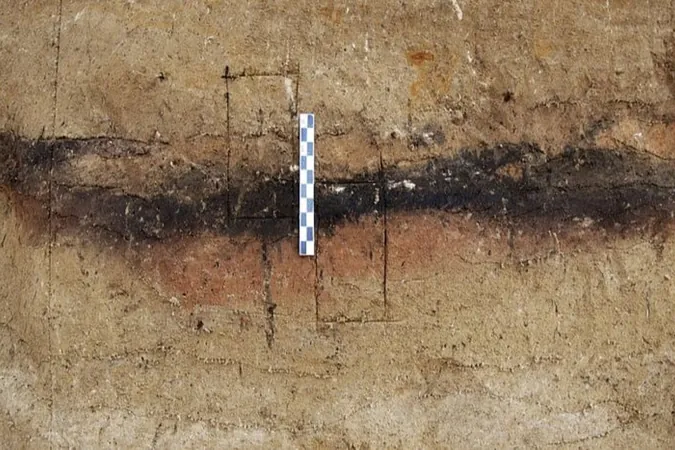
Revealing the Fire Masters of the Ice Age: How Ancient Hunter-Gatherers Innovated Heat
2025-04-15
Author: Sarah
Fire has long been recognized as a lifeline for humanity, especially during the frigid Ice Age. Yet, evidence of hearths—crucial markers of fire use—has been startlingly scarce from this era, particularly between 26,500 and 19,000 years ago in Europe.
However, groundbreaking research on three prehistoric hearths in Ukraine is illuminating how our ancestors harnessed flame during this harsh period. Published in the journal Geoarchaeology, this study reveals astonishing insights into the pyrotechnological prowess of Ice Age hunter-gatherers.
The Vital Role of Fire in Human Survival
"Fire wasn't merely for warmth—it was vital for cooking, crafting tools, and even social gatherings," explains Philip R. Nigst, the lead author of the study. Despite evidence suggesting that fire was common in Europe before and after the Ice Age, a striking 7,500-year void exists during its peak cold phase.
Unearthing Ice Age Innovations
Recent excavations at the Korman’ 9 archaeological site, dating back 23,000 to 21,000 years, have provided a rare glimpse into these ancient hearths located at the heart of the Last Glacial Maximum. Researchers employed advanced geoarchaeological techniques like microstratigraphic analysis and micromorphology to uncover these secrets.
Unprecedented Temperatures and Usage
The analysis revealed that these fires blazed at temperatures exceeding 1,112 degrees Fahrenheit (600 degrees Celsius), indicating a sophisticated understanding of fire management among these hunter-gatherers. Each hearth was uniquely constructed and used strategically depending on the season, showcasing varying heating capabilities.
As Nigst points out, "People expertly controlled fire for distinct purposes, consistently returning to the same sites throughout the year during migrations." This suggests a highly skilled approach to survival.
Fuel Sources and the Mysteries of Pyrotechnology
While the research indicated that spruce wood was the primary fuel, intriguing evidence of burnt animal bones at temperatures over 650 degrees Celsius points to a potential use of fats and bones for heating. Marjolein D. Bosch, another key researcher, emphasizes the need for further study to understand whether these materials were used purposefully or were simply byproducts of the fire.
This research not only sheds light on one of humanity’s earliest technologies but also emphasizes the mystery surrounding Ice Age fire use. Three hearths don’t entirely close the gap in our historical understanding, leaving us with lingering questions about the innovation of pyrotechnology in these challenging times.


 Brasil (PT)
Brasil (PT)
 Canada (EN)
Canada (EN)
 Chile (ES)
Chile (ES)
 Česko (CS)
Česko (CS)
 대한민국 (KO)
대한민국 (KO)
 España (ES)
España (ES)
 France (FR)
France (FR)
 Hong Kong (EN)
Hong Kong (EN)
 Italia (IT)
Italia (IT)
 日本 (JA)
日本 (JA)
 Magyarország (HU)
Magyarország (HU)
 Norge (NO)
Norge (NO)
 Polska (PL)
Polska (PL)
 Schweiz (DE)
Schweiz (DE)
 Singapore (EN)
Singapore (EN)
 Sverige (SV)
Sverige (SV)
 Suomi (FI)
Suomi (FI)
 Türkiye (TR)
Türkiye (TR)
 الإمارات العربية المتحدة (AR)
الإمارات العربية المتحدة (AR)